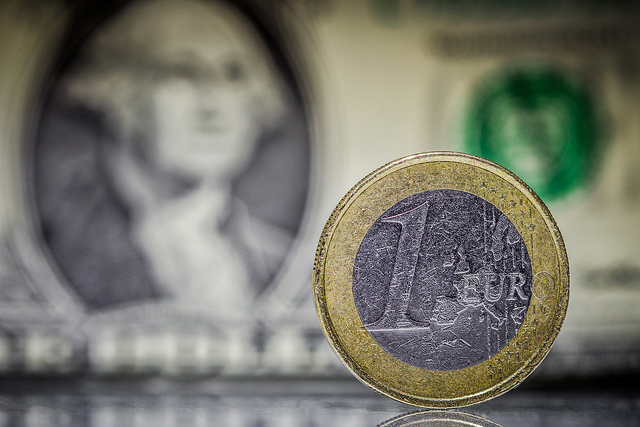Since the European Central Bank’s (ECB) announcement in January 2015 that it planned to implement an expanded EUR1.1 trillion quantitative easing programme to stimulate the euro-zone economy the euro has fallen sharply against the US dollar and is currently trading around 1.06-1.10. The selloff in the euro has accelerated post the ECB press conference in the first week of March and the subsequent collapse in bond yields saw the euro trade below 1.06 against the dollar for the first time since March 2003. A further fall of about 6% will see it reach parity. At the same time, firm February US labour market data boosted bond yields there, favouring the US dollar over the euro. The chart below shows the historical trading between the euro since its launch in 1999 and the US dollar.
The question of parity is on many investors’ minds and in this viewpoint Investec AM will consider the likelihood of such an event.
How likely is a further fall?
When researching currencies Investec asks three questions: Do the underlying facts support the investment case? Is the investment cheap? And, are investors buying it?
“In answer to the three questions above, when we apply our research to the euro all our short-term indicators continue to suggest a reversal of the euro’s fortune and we can see the euro zone is beginning to recover. The ECB recently raised this year’s euro-zone growth forecast to 1.5%, up from 1% previously. Secondly the euro is cheap, currently trading at about 13% below its long-term moving average, and thirdly, investors have taken a short position and we believe oversold the currency in the short term”, explains Russell Silberston, Head of Reserve Management at Investec AM
Applying the same exercise to the US dollar, Investecs´ research suggests flat lining economic data, albeit at modestly positive levels. “Our data surprises indices, however, have turned sharply negative, suggesting data is genuinely weaker or that market participants are far too optimistic. Taking a short-term view, the US dollar is slightly expensive as the pro-US story has reached consensus, but it remains cheap on a longer-term view”, points out Silberston.
“Bringing this analysis together, our research suggests the possibility of a rally in the euro towards its moving long-term average against the US dollar and so a further fall of 6% to reach parity seems unlikely, he says.
Two economies at different stages
In the medium term, however, the picture is different and Investec believes the US dollar can continue to rally. “The reason for this longer-term pro-US dollar view is the same as it was when we first went long in 2012”, relates the Head of Reserve Management at Investec AM.
The US is in a much better cyclical position than the rest of the world having deleveraged post financial crisis. Her banks are well capitalised, her labour markets are very competitive, interest rates are likely to rise later this year and, despite the big fall in oil prices, industry still has a big energy cost advantage over other countries.
In contrast, the euro zone has yet to deleverage seriously and faces years of hard fought structural reforms to make economies more competitive. This could keep interest rates low and growth subdued. Also, the single currency is sub- optimal. Europe has achieved monetary union before achieving political union and there are no effective cross-border transfers to aid countries facing economic hardship. This means those currencies are effectively in an economic construct similar to the gold standard, where only internal devaluation through lower wages is the only real route back to prosperity. This raises the political risks in the medium term, and indeed, there has been a rise in populist political parties in recent months.
“It is certainly possible, therefore, that the euro could fall further and hit parity, but only if our medium term pro-US dollar view is correct”, concludes Silberston.


